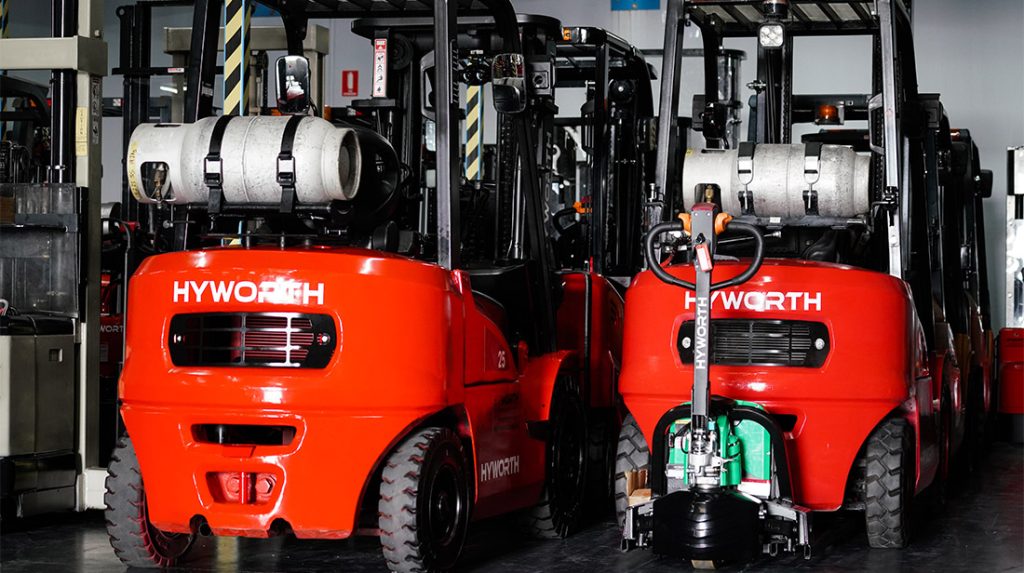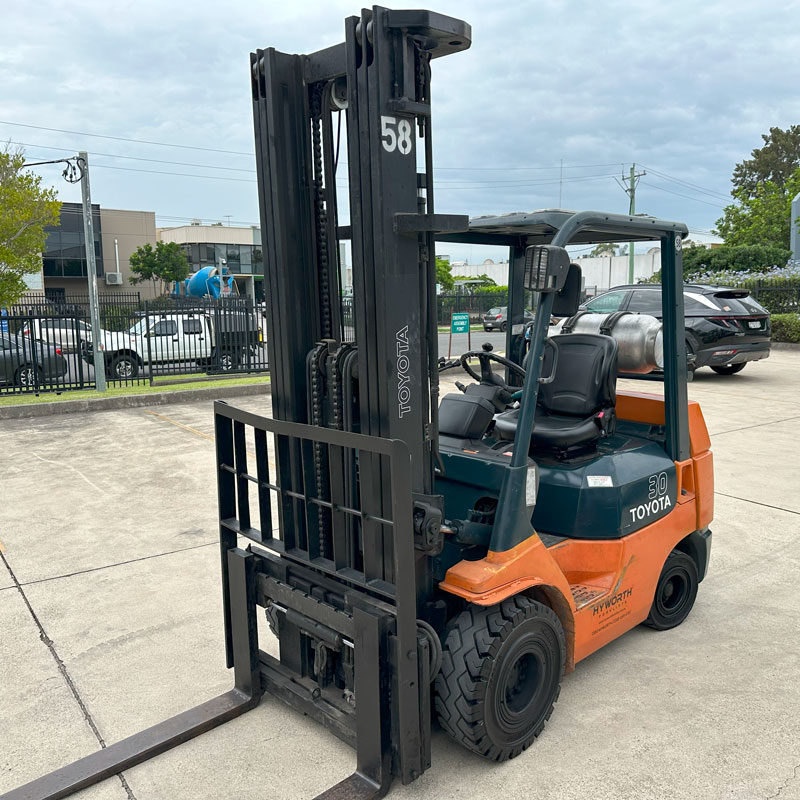
In the dynamic landscape of Australian warehousing and logistics, businesses constantly grapple with a critical decision: should they opt for short-term vs long-term forklift hire? This choice significantly impacts operational efficiency, cash flow, and ultimately, profitability. While short-term rentals offer immediate flexibility, long-term contracts often present substantial cost savings and integrated maintenance benefits. The optimal path isn’t always clear, especially with evolving market trends, technological advancements, and updated tax regulations. This comprehensive guide will delve into the nuances of forklift hire in 2025, providing a data-backed analysis to help you make an informed decision that aligns with your business objectives and maximises your savings.
Forklift hire options in 2025 at a glance
Understanding the fundamental differences between short-term vs long-term forklift hire is crucial for strategic planning. In 2025, short-term hire typically refers to rental periods of less than three months. This option provides unparalleled flexibility, making it ideal for addressing immediate, temporary needs such as seasonal peaks, unexpected equipment breakdowns, or short-duration projects. Conversely, long-term hire encompasses contracts ranging from 12 to 72 months. This extended commitment offers significant advantages, including reduced daily costs and often includes comprehensive maintenance packages, simplifying operational budgeting and ensuring consistent equipment performance. Each option caters to distinct business requirements, and the most cost-effective choice depends heavily on your operational patterns and financial strategy.
Price benchmarks: Daily to multi-year rates
In 2025, forklift hire prices in Australia vary significantly based on the rental type, capacity, and duration. Short-term daily rates can range from approximately $20 to $30, depending on the forklift’s specifications. For instance, a small 1-4 tonne electric forklift might cost around $20 − $26 per day, while a large 1.6 tonne ride-on reach truck forklift could cost $30 − $40 per day.
Long-term contracts, spanning 12 to 72 months, offer substantial cost reductions, often cutting daily expenses by 25-40%. These long-term agreements frequently bundle essential services like routine maintenance, servicing, and breakdown support into a fixed monthly fee, providing predictable operational expenditure and peace of mind. This contrasts sharply with short-term rentals, where additional costs such as mobilisation, demobilisation, and insurance are typically separate.
When a short-term hire wins
Short-term forklift hire proves invaluable in scenarios demanding immediate flexibility and minimal long-term commitment. Businesses experiencing unpredictable peak-season surges, such as during holiday periods or large project rollouts, can leverage short-term rentals to quickly scale their fleet without incurring the costs of ownership or long-term contracts. Similarly, in the event of an unexpected equipment breakdown, short-term hire provides rapid access to replacement machinery, minimising costly downtime and maintaining operational continuity.
Furthermore, short-term rentals offer an excellent opportunity to trial new forklift technologies, such as advanced electric models or specialised attachments, before committing to a significant investment. This allows businesses to assess performance and suitability in their specific operational environment, ensuring future purchases are well-informed and aligned with their needs. For more information on different forklift types, including electric options, you can read our blog post on Electric vs LPG Forklifts.
When a long-term hire wins
For businesses with consistent, year-round material handling needs, long-term forklift hire presents a compelling financial and operational advantage. These contracts provide a predictable operational expenditure (OpEx), as monthly payments are fixed and often include comprehensive maintenance, eliminating unexpected repair costs. This stability in budgeting is crucial for long-term financial planning. Moreover, long-term hire payments are typically tax-deductible, offering a significant financial benefit.
This arrangement frees up capital that would otherwise be tied up in equipment purchase, allowing businesses to invest in other growth areas, such as improving overall warehouse efficiency. With a reliable fleet and integrated support, long-term hire ensures maximum uptime and efficiency for operations with consistent workloads, making it a strategic choice for sustained productivity.
Hidden costs & savings to factor in
Beyond the headline hire rates, several hidden costs and potential savings can significantly influence the total cost of ownership for forklifts. Delivery and pick-up fees are a common additional expense for short-term rentals.
Downtime, whether due to equipment breakdown or scheduled maintenance, represents a substantial hidden cost in lost productivity. While long-term hire often includes maintenance, short-term rentals may leave businesses vulnerable to these unbudgeted interruptions. Battery replacement, particularly for lead-acid batteries, can be a significant expense over a forklift’s lifespan. Lithium-ion batteries, while having a higher upfront cost, offer substantial long-term savings due to their extended lifespan, faster charging, and zero maintenance requirements.
For businesses considering ownership, the residual value of a forklift at the end of its useful life is a crucial factor. However, Australian tax rules can significantly influence the total cost of ownership, tilting some businesses toward owning once utilisation passes approximately 70% of shift time. This allows eligible small businesses to immediately deduct the full cost of eligible depreciating assets. This tax incentive can make purchasing a forklift a more attractive option for businesses with high and consistent utilisation, potentially beating the long-term hire costs over time. You can also explore our range of forklifts for sale in Sydney for ownership options.

2025 trends shaping the decision
The forklift industry in 2025 is being reshaped by several key trends that influence hire versus buy decisions and operational strategies:
VR/AR Training
Virtual Reality (VR) and Augmented Reality (AR) are revolutionising operator training. VR-based training allows operators to practice in risk-free virtual environments, leading to enhanced safety, increased efficiency, and improved knowledge retention. This technology minimises on-site accidents and promotes adherence to safety protocols, making it a valuable investment for businesses prioritising safety and efficient training.
Lithium-Ion Battery Uptime
The widespread adoption of lithium-ion batteries is significantly impacting forklift uptime and operational efficiency. These batteries offer rapid charging times (1-3 hours), longer runtimes, extended lifespans (2,000 to 4,000+ charge cycles), and require zero maintenance compared to traditional lead-acid batteries. This translates to reduced downtime, increased productivity, and lower operational costs, making electric forklifts with lithium-ion batteries a highly attractive option for continuous operations.
Rental Market Growth
The global forklift rental market is projected to grow at a Compound Annual Growth Rate (CAGR) of 4.8% from 2023 to 2030, indicating a strong and sustained demand for rental solutions. This growth is driven by businesses seeking flexibility, reduced capital expenditure, and access to the latest equipment without the burden of ownership.
Safety Automation
Advancements in safety automation, including features like pedestrian detection, anti-collision systems, and telematics, are becoming standard in modern forklifts. These technologies enhance workplace safety, reduce the risk of accidents, and can lead to lower insurance premiums. When choosing between hire and purchase, considering the availability of these advanced safety features in rental fleets is crucial for maintaining a safe and efficient operation.
Quick decision checklist
To simplify your decision-making process, consider the following key factors:
- Utilisation %: If your forklift utilisation consistently exceeds 70% of shift time, purchasing, especially with the instant asset write-off, might be more cost-effective in the long run.
- Capital Budget: Assess your available capital. Long-term hire and leasing options preserve capital, while purchasing requires a larger upfront investment.
- Seasonality: Businesses with highly seasonal demands or unpredictable workloads will benefit more from the flexibility of short-term hire.
- Maintenance Skill: Evaluate your in-house maintenance capabilities. Long-term hire often includes comprehensive maintenance, reducing the burden on your team.
Conclusion
Choosing between short-term and long-term forklift hire in 2025 hinges on a careful evaluation of your operational needs, financial strategy, and an understanding of current market trends and tax incentives. While short-term rentals offer flexibility for immediate demands, long-term contracts often unlock significant cost savings and maintenance benefits.
By factoring in hidden costs, leveraging tax advantages like the instant asset write-off, and embracing technological advancements such as VR training and lithium-ion batteries, businesses can make a strategic decision that optimises their material handling operations.
To find the perfect forklift solution tailored to your specific requirements and to get a personalised quote, contact Hyworth Forklifts today.
Frequently Asked Questions
How do I know if short-term vs long-term forklift hire is right for my business?
Consider your forklift utilisation rate. If it consistently exceeds 70% of shift time, purchasing or long-term hire might be more cost-effective. For seasonal demands or unpredictable workloads, short-term hire offers greater flexibility.
What are the financial benefits of long-term forklift hire?
Long-term hire provides predictable operational expenses with fixed monthly payments that often include maintenance. These payments are typically tax-deductible, freeing up capital for other business investments.
How do Australian tax rules impact forklift acquisition?
The extended instant-asset write-off for the 2024-25 income year allows eligible small businesses to immediately deduct the full cost of eligible depreciating assets costing less than 20,000, making purchasing an attractive option for high utilisation.